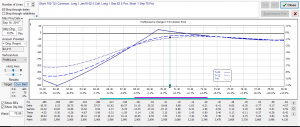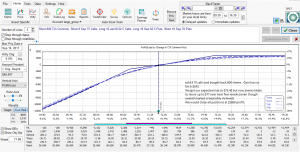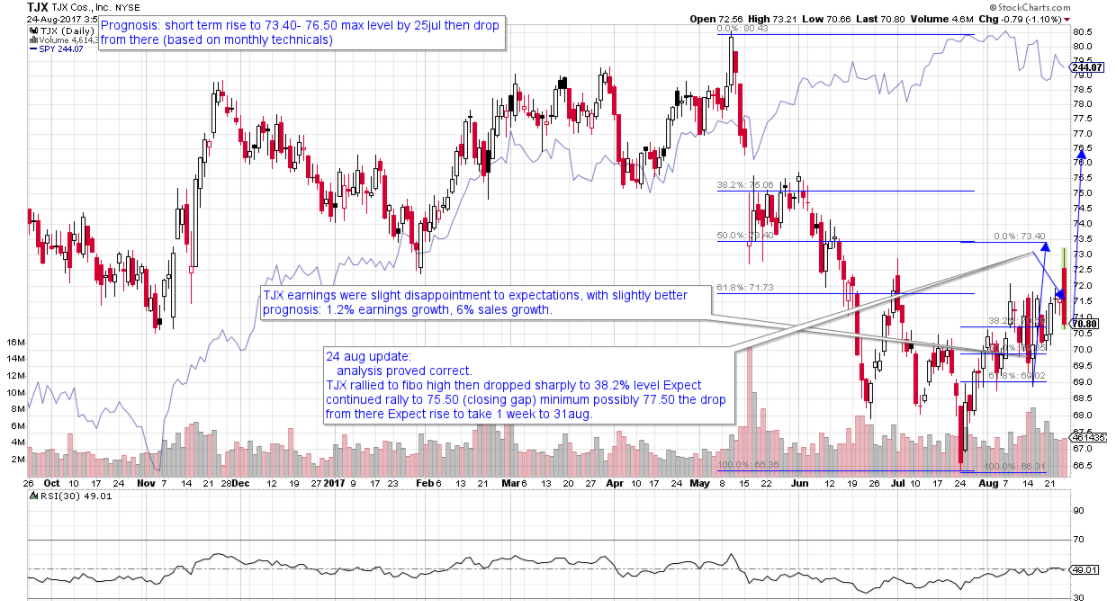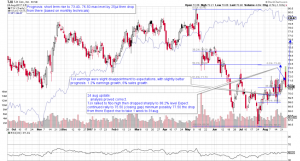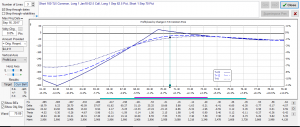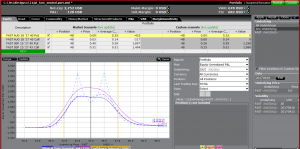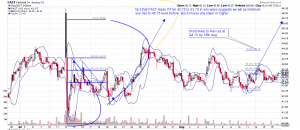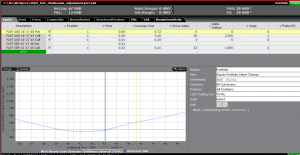On August 15th, TJX companies announced slightly disappointing earnings, with earnings growth under 2% and sales growth of 6% projected for the next year. However, management announced slightly better prospects, as same day sales growth turned around and its full year outlook improved. The stock moved up a few points in heavy trading.
Here's my technical read:
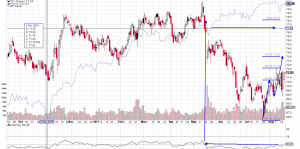
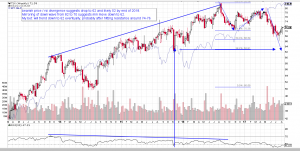
Today, on August 16th, volatility has already plunged, and is unlikely to fall much lower. Looking at the monthly and daily technical charts above, I foresee a temporary rise to between $75 and $77 over the next 2 weeks, then a move lower down to around $62 within 6 months.
My bet will be to the downside, despite the management prognosis. I don't think the fundamentals are strong enough to reflect an already high p/e ratio and I expect technicals to overcome fundamentals. However, I will scale into the trade as I expect a temporary rise.
Ultimately I want to end up with a "married call" , namely shorting the shares and buying a deep in the money call as my insurance policy. If I were to do that immediately, it would provide me a credit of $6127. My call option is in the money by $8.28, so my time cost is only $1.43. My maximum loss in this scenario is $143.
If I am right, and the price moves down to $62, say by December, I'll only be making around $240 or about 1/2 more than what I could lose. However there's a possibility the price will move all the way down to $50, and this position would be worth about $1100 if that happened.
In and of itself, I usually like to target trades with a better than 1:3 risk reward ratio, which this one does not feature unless we have a large move downwards, which I do not expect either. However ,over the course of the next few weeks I will execute a series of trades around this "base" scenario that hopefully will bring my "risk" portion of the portfolio down to nothing, "bulletproofing" the trade.
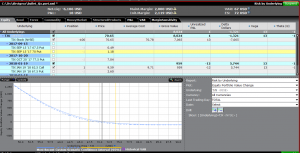
One of these I'll take right now. Since I first expect a short quick move up, I'm going to sell volatility and time short. Usually volatility remains low and sometimes drifts a bit lower after an earnings report's initial volatility plunge. I'm going to collect about $1.13 cents per share by selling a short term $70 put, and collecting $113 right away.
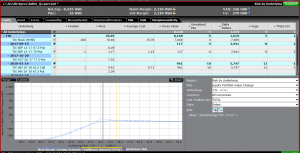
I am now making money to a price rise all the way to $82.50, and will make money if the price drops moderately to the $70/$69 range at which time the sold call would get exercised. If that happened I would make about $100.
Of course, options trades always have their trade-offs. If the price moves down fast and quickly below the level of the $70 put, this setup does open me up to a bigger loss (around $750). But that is unlikely, and besides it has a simple solution. If the put is exercised and you are no long short the shares, short the shares again or sell your long call, whichever is more profitable. If it is not exercised, take steps to extract yourself from this position with minimum cost, probably by buying back the put with a loss of $30-#50.
Chances are, we won't have this concern, but if it does, I need to be aware. I will set up an alert if the price drops to $70.
If the stock moves in the $70-$75 range over the next month, which I expect, I will reap that $113 premium,
lowering my overall risk to $30 maximum loss, while keeping my downside gains potential.
